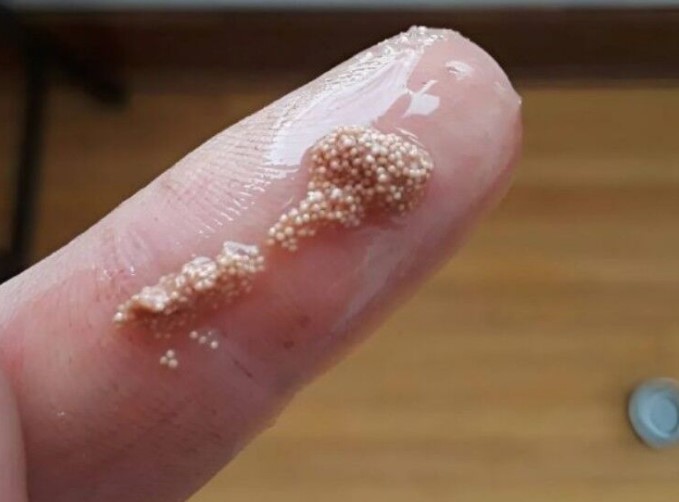One quiet morning, as I cracked open an egg for breakfast, I found something that made my stomach turn: strange, slimy white lumps floating inside the egg white. My mind immediately leapt to the worst possibility—were these insect eggs?

But what started as a moment of alarm turned into an eye-opening lesson about nature’s design—and food safety.
The Morning That Took an Unappetizing Turn

Like many people, I have a morning routine I don’t usually deviate from. A couple of eggs, toast, coffee—and I’m set. That day was no different. I’d just picked up a fresh carton of eggs from my local grocery store, a place I trust for its consistent quality.
But as I cracked one egg into the pan, I immediately noticed something odd: jelly-like, translucent lumps floating around the yolk. They weren’t colored, they didn’t smell bad—but they definitely didn’t belong in my breakfast, or so I thought.
My first instinct? Throw it away. But then curiosity got the better of me.
The Truth Behind the “Slimy Lumps” in Eggs

I paused, took a picture, and started researching. That’s when I stumbled upon a surprising discovery: these lumps weren’t insect eggs or signs of contamination—they were chalazae.
What Are Chalazae?
Chalazae (pronounced kuh-LAY-zee) are natural, rope-like strands of protein found in every egg. Their job? To anchor the yolk in the center of the egg white and keep it from breaking. Think of them like suspension cables holding the yolk in place.
Sometimes, chalazae are so faint you don’t notice them. Other times, especially in farm-fresh or minimally processed eggs, they appear as prominent, twisted white clumps. They’re a sign of a healthy, structurally intact egg—not a problem to worry about.
Why Do Chalazae Appear More in Some Eggs?

The visibility of chalazae can vary based on several factors:
-
Hen’s diet: A diet high in protein and calcium can cause stronger egg structure and more prominent chalazae.
-
Hen’s age: Younger hens tend to lay eggs with more distinct internal features.
-
Processing level: Factory-washed or chemically treated eggs often have less visible chalazae, while organic or fresh eggs retain more of their natural traits.
-
Stress: Hens under stress might produce eggs with irregular textures or small white deposits—still harmless to eat.
So, those strange clumps? Completely normal and totally safe.
When Should You Worry About Egg Contents?

It’s always smart to check your eggs before cooking, but here are signs that do indicate spoilage or contamination:
-
Foul odor: A sulfur-like or rotten smell is a clear red flag.
-
Discolored whites or yolks: Pink, green, or gray tints suggest bacterial growth.
-
Cracked or dirty shells: Can allow pathogens to enter.
-
Foamy or bubbly whites: Uncommon, and usually a reason to discard the egg.
If your egg looks clean, smells fresh, and has no discoloration, it’s likely fine—even with a few surprise features inside.
What I Learned (and Why I Ate the Egg Anyway)
Once I confirmed that the slimy lumps were just chalazae, I went ahead and cooked the egg. To my relief (and slight surprise), it tasted completely normal. No weird texture, no strange smell—just a delicious, protein-rich breakfast like always.
That moment became a reminder: sometimes what we fear is simply what we don’t understand. In a world of processed foods and perfectly polished grocery items, seeing something raw and natural can feel strange—but it’s often a sign that our food is real.
Final Thoughts: Don’t Fear the Unfamiliar
If you’ve ever panicked over a strange lump or texture in your eggs, you’re not alone. But before tossing your breakfast, pause and learn—because many of these “gross” surprises are just nature doing what it does best.
Eggs with visible chalazae are:
-
Safe to eat
-
Nutritionally intact
-
Proof of minimal processing
So next time you see something unexpected in your pan, don’t let fear guide your fork. Understand what you’re seeing—and enjoy the meal.
Sources for Food Safety Info:
